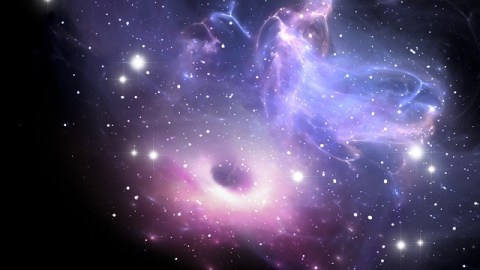Newly Found: A Supermassive Black Hole

What’s the Latest Development?
Astronomers at the Max Planck Institute for Astronomy in Germany report that they have found a black hole that’s more than four times the mass of the black hole at the center of the Milky Way. Using the Hobby-Eberly Telescope and existing images from the Hubble Space Telescope, they observed the black hole at the center of the disk galaxy NGC 1277. At 17 billion times the mass of the sun, it occupies 14 percent of the galaxy’s total mass.
What’s the Big Idea?
Current astronomical theory states that most galaxies have a black hole at their center that take up only around 1 percent of the galaxy’s total mass. The simple fact that NGC 1277’s black hole is so large compared to the total mass of the stars around it could potentially upend all existing theories about galaxy formation and evolution. Astronomers estimate NGC 1277 was formed more than 8 billion years ago, and because it doesn’t appear to have changed in size, the black hole was probably created quite a long time ago. In addition, early analysis of additional data suggests that there may be at least five other galaxies with similar mass ratios.
Photo Credit: Shutterstock.com





